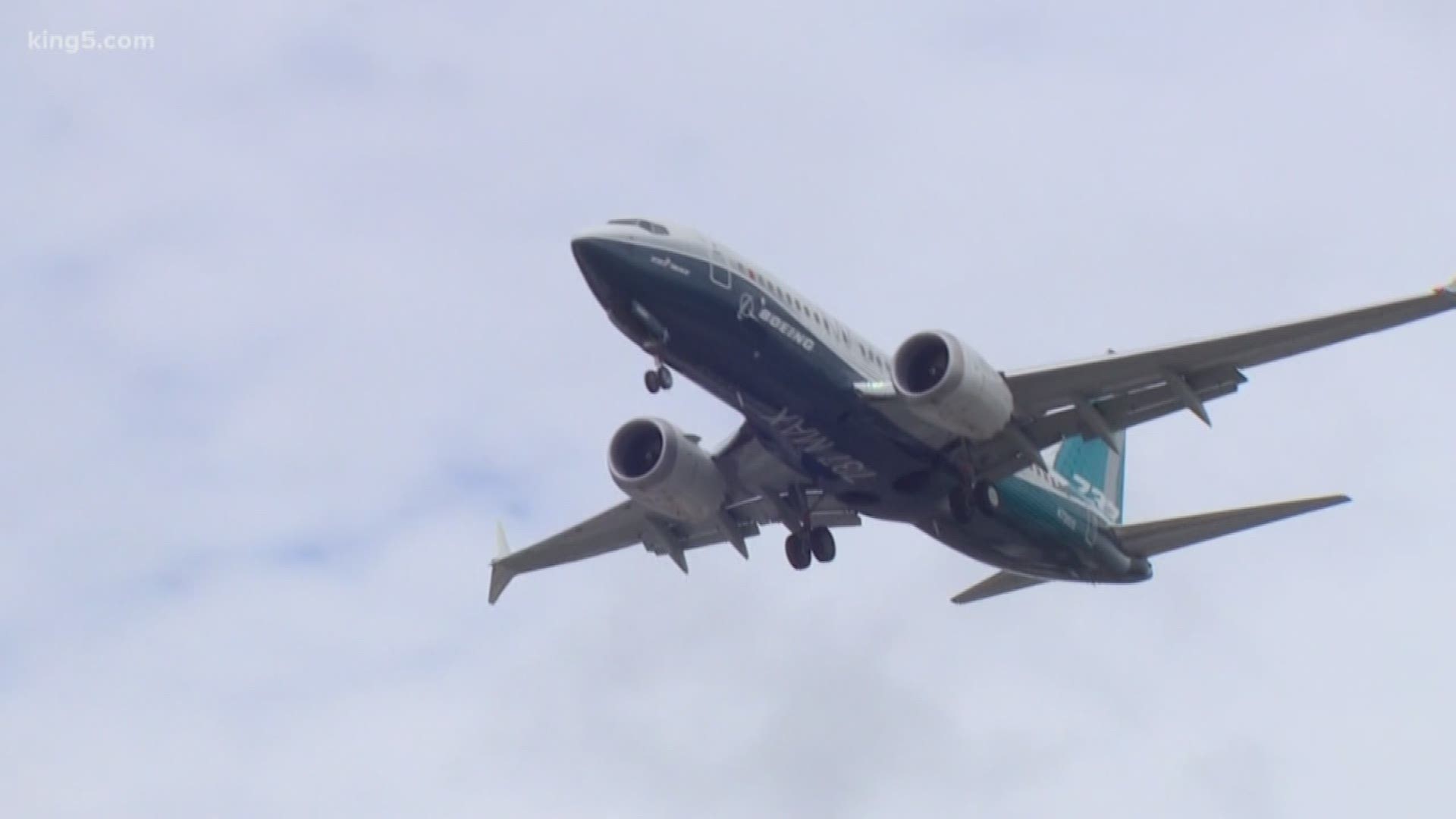SEATTLE — This week marks the one-year anniversary that Boeing’s 737 Max was grounded after two fatal crashes within the span of six months.
One year later, investigations are ongoing, the Max production line is halted, and it is unknown when the planes will be cleared to fly again.
The first sign of trouble was on Oct. 29, 2018, when Lion Air Flight 610 from Jakarta to Sumatra in Indonesia, crashed into the Java Sea shortly after takeoff, killing everyone on board. The plane that crashed had made its debut flight just a few months prior.
One month following the crash, the U.S. Federal Aviation Administration and Boeing issued a warning about possible trim stabilizer control issues with the Max airplane.
There was no global panic over the plane yet.
But that changed March 10, 2019 at 8:38 a.m.
Ethiopian Airlines Flight 302 took off from Addis Ababa, Ethiopia.
Two minutes into the flight, the Max's automated Maneuvering Characteristics Augmentation System (MCAS) activated, pitching the nose downward. The pilots struggled to control the plane but the plane crashed six minutes after takeoff.
That day, Ethiopian Airlines grounded the rest of its 737 Max aircraft. Regulators in other countries followed suit but it wasn't until March 13, 2019, when America's regulatory body — the FAA — decided to do the same thing.
Later that month, the Department of Justice opened a criminal investigation into Boeing's certification procedures and pilot training on the 737 Max. To this date, no charges have been announced.
One month later, in April 2019, the FAA announced delays in its investigation to lift the grounding, which signaled that the planes were not going back in the air anytime soon.
Then Boeing cut production of the MAX at its Renton factory from 52 to 42 airplanes per month because of the grounding.
Multiple lawsuits were filed against Boeing by the airlines and families of passengers killed in the crashes. Some have since settled.
In October, the first official investigation was made public. Indonesia’s National Transportation Safety Committee, faulted Boeing with the crash of Lion Air Flight 610. The report said the planes needed better cockpit design and stronger oversight.
Here in the U.S., Congress brought then-CEO Dennis Muilenburg to testify. He was later replaced as CEO.
The latest chapter was written this week, when Ethiopia released the final report of the second Max crash. Its report also faulted Boeing and the Max design.
The big question is — when will the FAA sign off on the 737 Max to fly again. That answer is still unknown.

